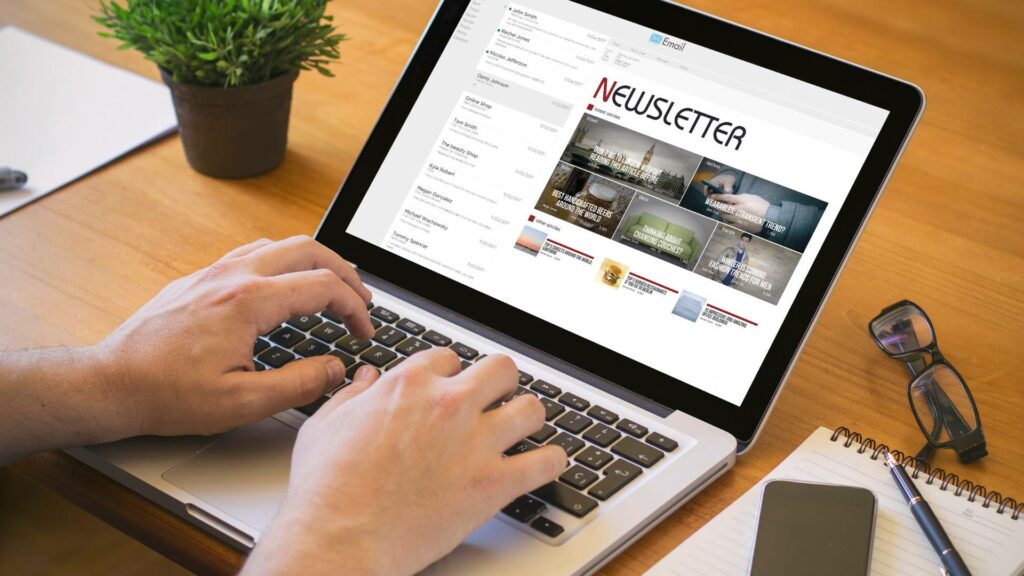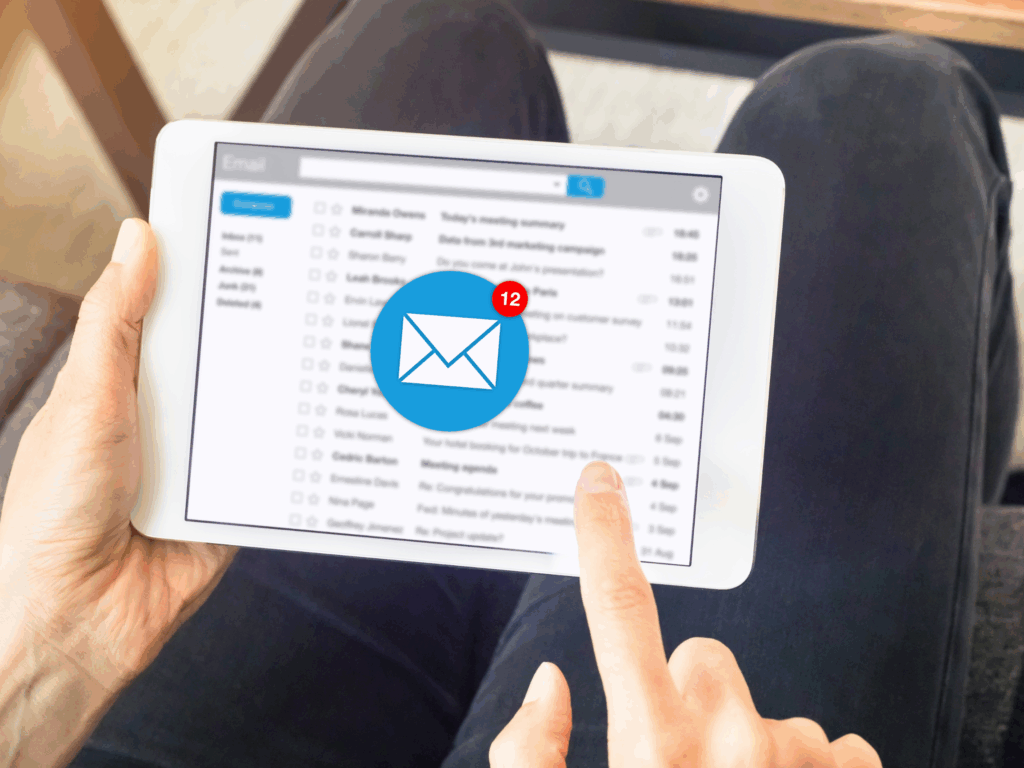Newsletters have been one of the most long-standing forms of mass communication and marketing efforts. Some people may believe that newsletters and email marketing are dying practices in the modern age of text notifications and digital ads. However, they would be sorely misinformed.
Multiple studies have shown the return on investment of email marketing to be as high as $36-40 for every dollar spent. Even with modern methods becoming an important part of marketing efforts, newsletters are far from a dying practice. In a world of impersonal digital ads, a newsletter allows companies to really connect with their audience.
However, how a newsletter campaign is executed is just as important as the content within. One of the most vital factors to consider with newsletters is the timing and frequency that it is sent. After all, you want to be able to reach as many people as possible at the right time for them to open and read it.
So, how do you determine when to send email newsletters and how often? Well, there are a few factors involved that can help to decide the best newsletter timing and frequency practices for newsletter campaigns in 2025.

Creating a Newsletter Schedule: What Days are the Best to Send Your Newsletter?
The first place to start with creating a newsletter is deciding which days and times it should be sent out throughout the week or month. Newsletter industry data shows that weekdays tend to have slightly better open rates than weekends.
Moreover, email blasts sent during the workday tend to have a higher open rate than those sent after hours. For a further breakdown, here is time and open rate data compiled by Mailerlite for the highest average open rates:
- Monday: 4 PM with an average open rate of 53.4%
- Tuesday: 6 PM with an average open rate of 52.3%
- Wednesday: 4 PM with an average open rate of 52.2%
- Thursday: 7 PM with an average open rate of 52.5%
- Friday: 6 PM with an average open rate of 52.7%
- Saturday: 7 AM and 9 AM with an average open rate of 49.1%
- Sunday: 9 AM with an average open rate of 49.6%
Consider Your Audience
The above is valuable data that can help businesses determine a good window for their newsletter sending time. However, another key point is to consider the audience. Evaluate and leverage current and past analytics regarding email campaigns and blasts to determine when your specific audience tends to open their emails.
While broad general data is always helpful, specific and day-to-day analytics can offer a more pinpointed and accurate perspective. Moreover, don’t forget to consider time zones when sending out the newsletter.
The worst thing to do is send all newsletters out at the same time, as it could land at multiple different times across the country. Instead, be sure to stagger the emails to ensure they arrive at the right time for each time zone.
Newsletter Timing: Production Schedule and Frequency
The next part of determining when to send a newsletter is the frequency. In other words, how often should the business be creating a newsletter and sending it out? The important thing to keep in mind here is a balance between annoyance or fatigue and maintaining interest.
You certainly don’t want to exhaust subscribers with endless newsletters when they check their email until they get annoyed and unsubscribe. However, you also don’t want to wait too long to send a new one that they unsubscribe because they don’t see the point in waiting around.
There isn’t any right answer for the frequency, necessarily. This is primarily because the right time for an audience can vary depending on the business, particular promotions or periods, and the industry. However, some general recommendations can be followed to begin with, such as:
- No more than twice a week
- At least once a month
Simply applying these two points in the beginning can be a good way to gauge interest in the newsletter. If the audience is loving it and sending feedback, then maybe ramp it up a little bit. If email open rates are dying out or subscribers are decreasing, it may be time to improve the content and decrease the frequency. Some may even try splitting the difference between the two points above and starting with a weekly or biweekly newsletter. A good plan is to create a quarterly newsletter schedule to stay ahead of the game.
Businesses can also try surveying after some time of sending it out. This can help to get the audience’s perspective on what they like, don’t like, or think should be added to the newsletter. To improve the survey response rate, businesses could try adding an incentive for filling it out, such as a discount or gift.
Watch Your Metrics
The key strategy after starting a newsletter campaign is to keep a close eye on the metrics. Monitor, record, and analyze metrics like:
- Send rate
- Opens and clicks
- Click-through rate
- Conversion rate
- Unsubscribe rate
All of these metrics are the key to fine-tuning a newsletter to its point of highest success. They offer valuable insights just at a quick glance. For instance, if the open rate is low, it may not be being sent out at a good time. If the click-through rate is low, people may not enjoy or be hooked by the content. All of this is good information for things you can experiment with, such as a catchier subject line.
If the unsubscribe rate is increasing, the audience may dislike the frequency or content itself. This gives the business a footing on where to begin improving the newsletter itself or the strategy. Be sure to play around with days of the week, times to send email newsletters (like the middle of the week), and track the worst day to send.
Emerging Newsletter Trends for 2025
Now, let’s take a look at some of the more popular newsletter trends emerging in 2025. Most of these began over the last few years, but are ramping up in the new year. These include the following.
Personalization
Personalization of newsletters and email campaigns is critical for success in the modern digital age. Consumers are tired of getting blasted by canned, rote, or blase messages that seem to just view them as another number. People are more inclined to respond and engage with emails that connect with them, offer them personalized discounts or offers, or cater to their interests.
Automation
The advancements in AI and machine learning have introduced a high level of automation into the world of email campaigns and marketing. Businesses can automate and optimize their campaigns across the board to ensure they remain consistent, effective, and monitored.
Compliance
More businesses are placing significant focus on adhering to data protection regulations, like those laid forth by the CCPA (California, US) and GDPR (EU). Sticking to these regulations helps to give customers more faith and confidence that businesses are looking out for them.

Let Graphem Solutions Handle Your Newsletter
If you are looking to launch a newsletter for your business but aren’t sure where to begin, Graphem Solutions can help. We offer newsletter template design to help you kick off creating the best newsletter possible. Our design team offers years of incredible experience to help create the perfect newsletter template for your business and goals.
After that, we can help with tools to manage and optimize your newsletters, email lists, and campaigns. Contact us today at 1-800-590-0175 to learn more!



